Sclerotinia stem rot, more commonly referred to as white mold, can be a devastating disease in soybeans. Yield losses can be extreme when conditions favor the development of the disease. Treatment options have historically been few, and the ones available have been difficult to decide to use and to time for the best control. Adding to the frustrations associated with trying to treat soybeans for white mold is the fact that treatments have to be made before symptoms appear. Dan Davidson posted an excellent description of the symptoms of this fungal disease last year on ILSoyAdvisor https://www.ilsoyadvisor.com/on-farm/ilsoyadvisor/controlling-white-mold.
White mold spores are distributed by structures called apothecia that appear on the soil surface early in the growing season. When these structures coincide with the R1 stage of soybean development, spores are distributed and enter the soybean plants through the soybean flowers as the flowers die and dry up.
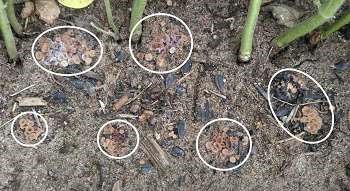
Apothecia on soil surface. Photo by University of Wisconsin, Jamie Willbur
The typical symptoms of the disease don’t usually appear until much later in the growing season, often as late as development stage R5-R6 following cooler than average temperatures and higher levels of humidity within the soybean canopy. Other factors that can affect white mold severity are row width, irrigation and variety susceptibility. Scouting for apothecia and determining when to apply fungicides historically has been especially difficult. The best time to spray fungicides for white mold is during flowering (R1 and R3 growth stages) when apothecia are present on the soil surface. As with any disease, if any leg of the disease triangle is not present or doesn’t occur at the same time as the others, the disease won’t develop.
I have been trying a new smartphone app that can aid in the prediction of when apothecia will appear. This app, which is free to download, is named Sporecaster, and was programmed by the University Wisconsin-Madison Nutrient and Pest Management Program. It is available on both iPhone and Android platforms.
In trying the Sporecaster app, I first needed to enter a field to monitor. This process was easy and is user friendly. You enter a name for the field, then are sent to a map to zoom in on your field and then set a pin to give the app geographic location for base weather data gathering. You can toggle between map layer and satellite layer to make sure you’ve chosen the correct field.
After you’ve uploaded your field information, the app will ask you about row width, irrigation or non-irrigation, and if there are flowers present. If soybean flowers have not developed, the app will not make a treatment recommendation. If there are flowers present, the app will access historical weather data and assess the risk of the individual field for white mold and give a recommendation on whether to treat.
Sporecaster app will keep a record of the reports you’ve generated, and you can share them as a CSV file to enter them into a spreadsheet program. You can share reports with others via email, Bluetooth or save them to a shared Google Drive folder.
I’m finding this app a nice tool for help in the decision-making progress for white mold management. I’ll update my findings as we move further through the growing season.
Android install: https://play.google.com/store/apps/details?id=ipcm.soybeandiseasecalculator
Apple install: https://itunes.apple.com/us/app/sporecaster/id1379793823?mt=8
Screen shots below:
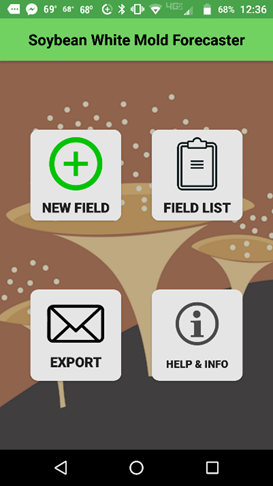
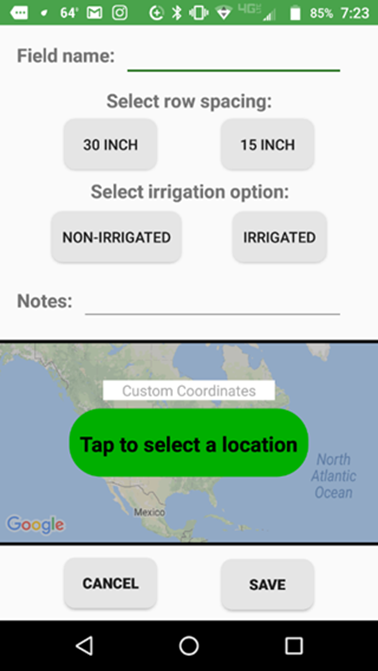
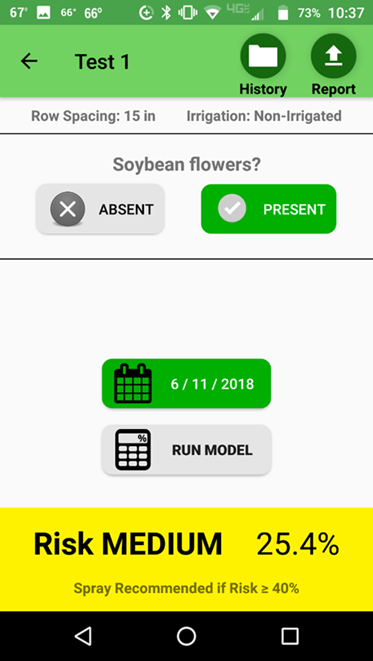
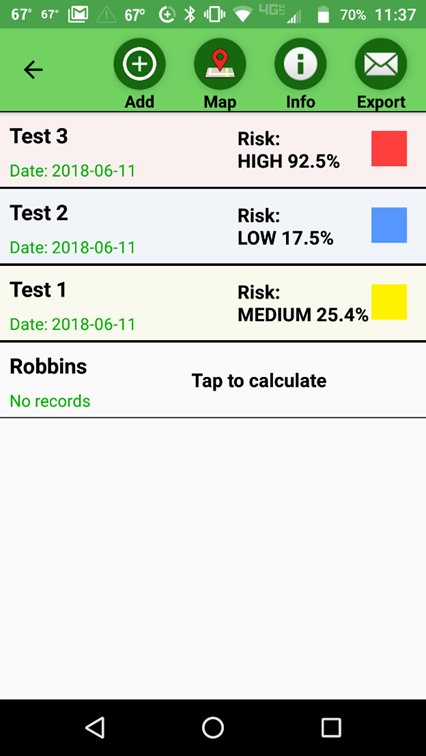




 and then
and then